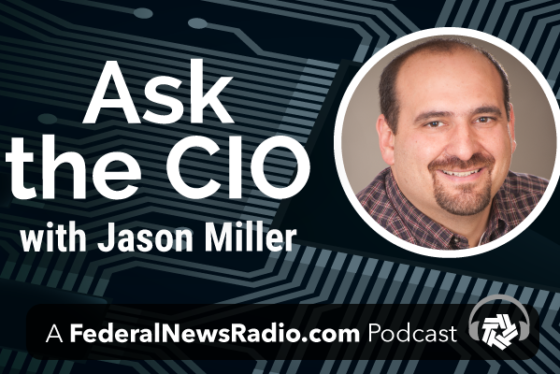Cybersecurity
-
Cyber challenges are more prevalent than ever. That's driving the need for more people with the professional skills necessary to prevent and mitigate attacks. To that end, the Army Reserve has launched a new partnership to build its network of cyber warriors. The program is designed to train soldiers in cyber warfare — for both the Reserve and private sector employers. Lt. Col. Scott Nelson is the Army Reserve's Cyber P3 Program Manager. He joined the Federal Drive with Tom Temin with more on how it all works.
February 26, 2015 -
The forthcoming Cyber Threat Intelligence Center would not only serve as a centralized hub for cyber intelligence, but also would fuse cyber information with other intelligence sources and serve as a central point for declassifying secret data about cyber threats.
February 25, 2015 -
The Veterans Affairs Department is requesting $20 million in fiscal 2016 to move its appeals processes from a mix of paper and electronic processes to only electronic. The additional funding is part of VA's $4.13 billion IT request to Congress.
February 25, 2015 -
Andy Ozment, the assistant secretary of the Office of Cybersecurity and Communications within the National Protections and Programs Directorate (NPPD), said the continuous diagnostics and mitigation (CDM) and Einstein 3A programs would be "gravely" affected if Congress doesn't pass DHS funding bill by Feb. 28.
February 20, 2015 -
The program that certifies the security of cloud-services providers will launch a namesake website next month in hopes of wooing cautious and confused agencies and vendors.
February 20, 2015 -
New research shows departments do not incorporate cybersecurity efforts into their goals and objectives, said Kevin Desouza, the associate dean for research at the college of public programs at Arizona State University and a non-resident senior fellow of Governance Studies at the Brookings Institution.
February 19, 2015 -
Jeremy Grant has led the National Strategy for Trusted Identities in Cyberspace (NSTIC) program since 2011. His last day will be in April.
February 19, 2015 -
Information sharing is a two-way street with road hazards in both directions. President Barack Obama held the first White House Cybersecurity Summit last week and issued an Executive Order with hopes of fostering a more open exchange between government and the private sector. Jeff Schilling is the chief security officer for FireHost. He once directed the global Security Operations Center under U.S. Army Cyber Command and has seen the challenges from both sides. On the Federal Drive with Tom Temin, he pointed out cybersecurity was only one of the topics the glitterati actually discussed.
February 19, 2015 -
The Defense Department's National Information Assurance Partnership's (NIAP) protection profile will be the governmentwide standard for agencies to use when ensuring the security of mobile apps. The Mobile Technology Tiger Team recommended the NIAP approach because of the collaboration and coordination across government and with industry.
February 19, 2015 -
Maria Roat, former FedRAMP director and current CTO at Transportation, sat down with the Women of Washington radio show to discuss her work on FedRAMP and the challenges she faced in its implementation.
February 18, 2015 -
By DARLENE SUPERVILLE and MARTHA MENDOZA Associated Press PALO ALTO, Calif. (AP) — Cyberspace is the new “Wild West,” President Barack Obama said Friday, with everyone looking to the government to be the sheriff. But…
February 17, 2015 -
Rep. Will Hurd (R-Texas) has four top priorities as new chairman of House Oversight and Government Reform Subcommittee on IT, and he wants to use a "three-legged stool" approach to realize them.
February 17, 2015 -
A handful of government websites are taking at least one step toward making themselves more secure. They're hardcoding a security protocol that would make it more difficult for outsiders to intercept a visitor's connection. That's according to 18F, the General Services Administration's tech team. Eric Mill, a technologist and member of the 18F team, joined Tom Temin on the Federal Drive to discuss the upgrade.
February 17, 2015 -
A task force assigned to take a holistic view of the Navy's cybersecurity posture catalogues security holes across the Navy enterprise, and concludes that plugging each one would cost an absurd amount of money.
February 16, 2015 -
The U.S. Postal Service says it's fixed the electronic glitch that had disrupted some services -- and that everything is back to normal.
February 14, 2015






